Wind Turbine Yaw Brake Hydraulic System
The main parts of the yaw brake hydraulic system and their functions are
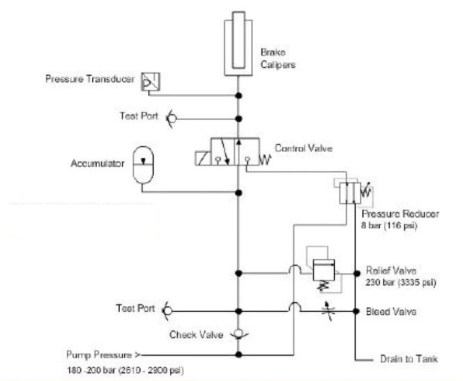
Accumulator:
The accumulator stores fluid under pressure, and serves as a backup source of clamping pressure if system pressure is lost.
Bleed Valve:
Used to drain fluid from the accumulator to relieve pressure during service operations.
Brake Calipers:
Pressure in the brake calipers provides clamping force on the yaw bearing, holding the nacelle in a fixed position.
Check Valve:
This valve traps fluid in the brake if pump pressure is lost.
Control Valve:
This valve is spring-loaded to port system pressure of 180-200 bar to the brake calipers. When yaw correction is needed, the valve solenoid shifts the valve, allowing reduced pressure to the calipers, releasing them enough tor the yaw motors to turn the nacelle.
Pressure Reducer 8 bar (116 psi):
This valve supplies the reduced pressure needed during yaw movements. Excess fluid is ported to tank.
Pressure Transducer:
The transducer sends hydraulic pressure information to the system control.
Relief Valve 230 bar (3335 psi):
Protects the system from excess pressure.
Test Port:
These ports allow access to pressure gages or other test equipment.
When the brake is applied, system pressure lifts the check valve, allowing fluid to flow through the control valve to the brake.
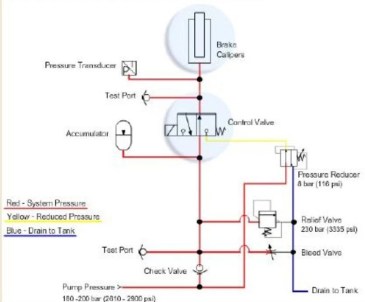
Fluid also flows into the accumulator, and to the pressure transducer and service ports.
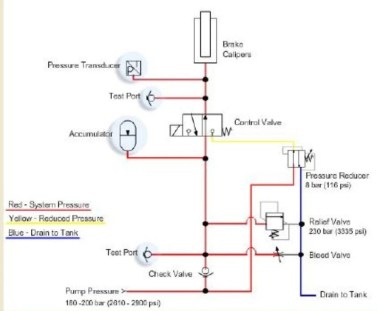
System pressure is present at the pressure reducer and the relief valve. Reduced pressure is supplied to the control valve, with excess fluid flowing back to the tank
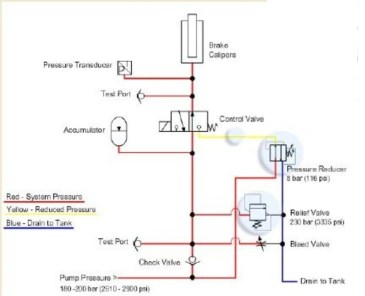
When the brake is released, the control valve shifts position, closing the system pressure port, and supplying reduced pressure to the yaw brake.
This releases the brake just enough for the yaw motors to turn the nacelle while providing drag that helps to stabilize and control yaw motion
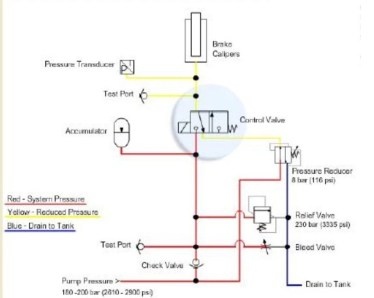
If system pressure is lost, the check valve seats, trapping fluid in the brake. The accumulator provides sufficient pressure to keep the brake locked until system pressure is restored.


Highland Community College as part of WindTechTV.org
